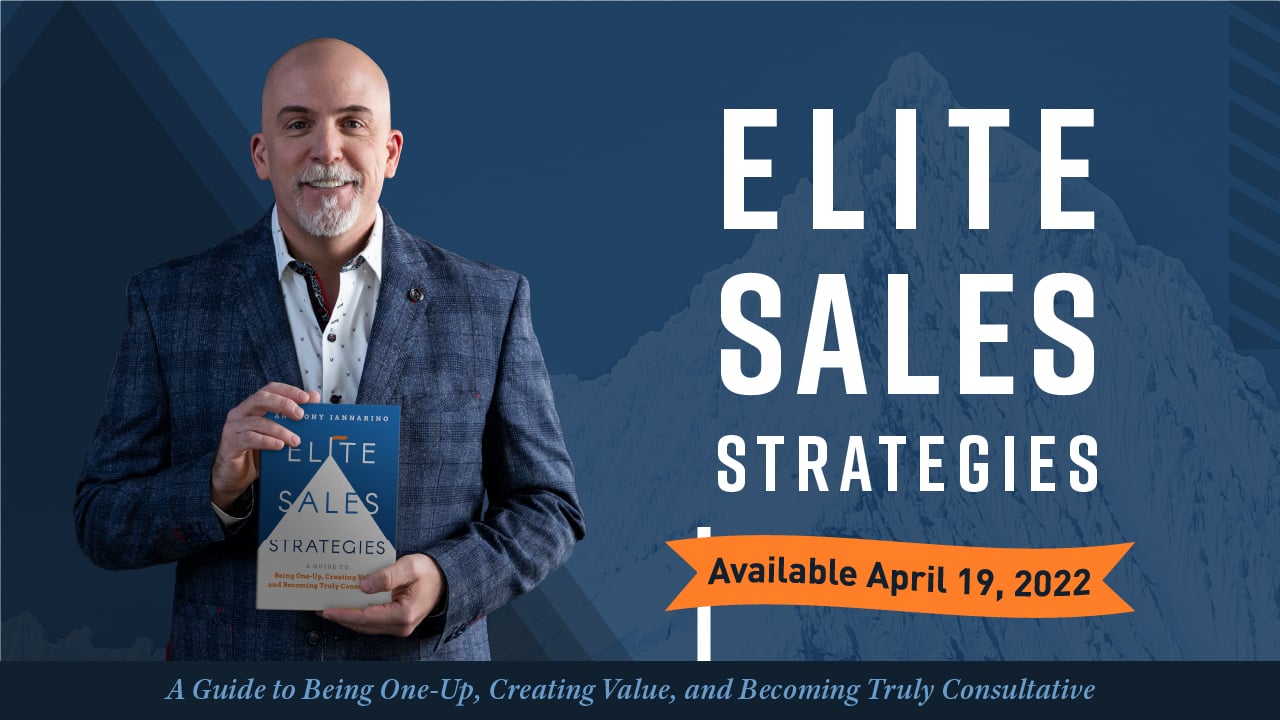The four books I have written and published are really one big book, based on one big idea. That idea is that the craft of professional selling evolves over time. The arc of this evolution bends towards greater value creation and away from the more transactional approaches still being used. What once was a valuable conversation doesn't create enough value for clients in this environment. When how you sell is not valuable for your clients, you need to change your overall approach to one that creates the level of value that your clients find valuable enough to buy from you.
The Only Sales Guide You'll Ever Need is a competency model thinly disguised as a book on success in sales—a decision I made because no one wants to read a competency model. The reason I wrote this book first is because I believed that B2B salespeople needed to recognize the attributes, character traits, and the new skills to sell effectively. The last three skills in the second half of the book were business acumen (largely unaddressed), change management (a few sales organizations have a model for helping their clients change), and leadership (the concept that the salesperson must lead their clients). I still believe this book should be read before reading the three that follow.
The Lost Art of Closing: Winning the 10 Commitments That Drive Sales. You will find the 10 commitments in The Only Sales Guide. Because a business book is generally around 60,000 words, there was no room to explain each of the ten commitments. Over my time in sales, I recognized that the linear sales process so many salespeople relied on was becoming nonlinear, making it difficult to move the conversation forward.
I wrote the Lost Art of Closing to provide a guide to give salespeople a way to be effective in a process that is nonlinear, by helping their prospective clients have the conversations that ensured they succeeded in making the right decision for their company and their goals. By creating value through the sales conversation and leading their contacts, the salesperson creates value outside of their "solution," creating a preference to buy from them.
Eat Their Lunch: Winning Customers Away from Your Competition is a book about competitive displacement, i.e. stealing customers. Because I sold in a competitive and commoditized industry (a Red Ocean), winning a client meant taking it away from a competitor. The book begins with a chapter on Level 4 Value Creation, something I recognized in 2011, making it the oldest of my frameworks. The general idea is that winning requires you to create a level of value greater than the value your competitor creates.
Level 4 is the level of creating strategic value, the polar opposite of the transactional approach. The second chapter of the book gives the salesperson a way to open a call with insights designed to help their prospect recognize the need to change, one of the major differences between the modern approach and a legacy approach to sales. Eat Their Lunch also includes a structure for "capturing mindshare," a form of narrative warfare with a prospecting sequence to execute the approach. It also includes a view of advanced discovery and what might be the first published framework for building consensus.
I was prepared to write a book on sales leadership, as I already had a very complete outline when I gave a keynote speech at OutBound Conference in 2021. The speech was titled: A Master Class on Being Truly Consultative, and the main strategy was how to maintain the position of being "One-Up," hearkening back to the last skill in The Only Sales Guide You'll Ever Need: Leadership. I watched the audience respond to the strategies included in the approach and recognized the need to write the book.
Elite Sales Strategies: A Guide to Being One-Up, Creating Value, and Becoming Truly Consultative. The concept of being "One-Up" is that the salesperson has greater insights and experience when it comes to making the decision their client is charged with making. Their client is "One-Down," which is not to suggest that their decision-maker isn't smart, but rather, they lack the experience that would allow them to make the best decision and one that would ensure they realize the better results they are pursuing. The general idea is: "I know something you don't know. May I share it with you?"
This book is an extension of the first three and it provides a clear lens to understand and execute an approach that for the first time recognizes that how you win a deal is by creating greater value inside the sales conversation. While the legacy approach to sales insists the salesperson identifies a problem and solves it by selling their solution, the modern approach is one that allows the salesperson to create value in the sales conversation by providing their counsel, their advice, and their recommendations, essentially teaching the client how to make a decision they are required to make.
Elite Sales Strategies raises the bar on what it means to be truly consultative, a response to the changing environment, one that finds our clients struggling to make a change when confronted with both complexity and uncertainty. As the long arc of the evolution of sales continues to speed towards greater value creation in the sales conversation, it's critical that professional B2B salespeople adopt and execute that which creates the greater value that their clients need.












